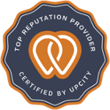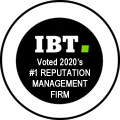Humanization vs. Optimization: A Scratch and Sniff Adventure
Jer Niedt, November 30, 2012
Google’s ostensible goal is to create the best corollary to how users browse the web. Without impediment, this would allow Google to eventually provide near-perfect information to the user. Whether by commission or naiveté, the SERPs are not free of the static noise that is SPAM. As such, any methods Google perceives as disruptive to this goal will eventually be devalued or penalized, in an effort to clean up the results.
Traditional SEO has become a balancing act of effectively responding to increasingly aggressive updates from Google. Agile response to these updates is crucial, as many techniques are still effective, even if they don’t necessarily gel with Google’s mission statement. This agility must be tempered with acceptance of Google’s process, and embracing of more “bulletproof” methods.
The more natural the method, the higher its inherit power. The more control over a method a webmaster has, the more potential it has for exploitation. Onsite optimization is a far weaker signal than a citation. Citations imply the relevance of the site to others to the engine, whereas optimization ensures proper indexation, and definition of site hierarchy and content. Optimization is still important, but implies a more technical perspective in attempting to garner traffic, through manipulation of rank.
(Fruit Punch)
Humanization will be the new optimization. Content must be crafted for people, not regurgitated banal brochure copy crammed with alchemically-devised mixtures of anchor text and keyword densities. “Linkbuilding” is dwindling in deference to inbound marketing, relationship building, and outreach to like-minded individuals. Social interaction isn’t icing on the cake anymore, it is a necessary avenue from which sites must garner traffic.
(Blueberry / Cherry)
Content Strategy vs. Page Optimization
Onsite work has always been divided into two camps, content and speed. Speed is purely technical, and will always remain a constant. This is not to say that new technical standards may not benefit the way in which sites are indexed, cataloged, or presented, but it is a scientifically objective avenue.
Speed is always a positive thing in terms of user experience. Content, a purely subjective concept, is open to interpretation by the individual user. It used to be the case that content could be approached almost like speed, in that you could “optimize” by hitting certain keyword densities and ensuring that self-constructed satellite properties were also using the same key terms. That is not the case anymore.
While a certain amount of attention needs to be paid to meta data, headings, and content in terms of attempting to gain ranking for particular keywords, it is only establishing a definition of your pages content for the SERPs. Content needs to provide something other than repeated keywords.
Google scrutinizes duplicate, thin, or “overoptimized content”. Content should be natural, unique, and of an appropriate length for its purpose. If content is on a page purely for SEO, the existence of that page should be questioned.
(Guess The Smell! Answers at the End of the Post!)
All of the items above add value to a site’s content, beyond simple information. Some are harder to implement than others, but the return is much higher. Often, content can be generated by the user given the correct platform.
• Any informational site can craft evergreen content. Create tutorials for how to use your product, craft case studies for on-site contractor work, show people the value of your product over another.
• Gamification has become increasingly popular. Sites offer onsite rewards, certifications, or levels of achievement that may, or may not, have any bearing on the outside world, but inspire the user to continually engage the site.
• Often users are attracted to the opinion of others on current events, politics, or whether Star Wars is going to become a Jar-Jar fest with Disney at the helm. People crave interaction online. Sometimes even just a strong, opinionated, personality can draw people.
• Staying on top of news, regardless of topic, can pull users in. If you’re the first to report on certain topics, especially in niche spheres, it can by a massive boost to your perceived authority, garnering interaction and citation.
• I admit, humor could have fit in with other sections, but very few things bring as much repeat traffic. If you can get on someone’s funny bone, you’ve got a repeat visitor for life. Just don’t let them down.
• User generated content is a powerful thing that can quickly grow out of control, in good and bad ways. Many of the most popular sites on the net are fueled purely by user generated content. Consistent curation and censorship is necessary, but the returns can be limitless.
• Rich media powerfully augments any standard content. Video especially can aid in explanation, entertainment, or humanization of a conversation. With the constant decrease in cost and increase in quality of video equipment, it is becoming increasingly easy to create professional rich media.
• Social interaction does not have to be relegated to offsite resources, start discussions on your site. Bring on guests to spark continual interests. Host offsite events. Introduce users to other users. A constantly growing community is one of the most powerful tools a site can yield.
So now you’ve got powerful, engaging content. How do you get people to see it?
Inbound Marketing vs. External Linkbuilding
Linkbuilding has been one of the most abused areas of SEO for a very long time. Often, inbound linking resources were constructed with low quality, duplicate, or non-existent content. Because anchor text matched, they would still imply relevance to Google. Legitimate properties have existed for just as long, but were easily outmatched by overzealous submission to article directories, social bookmarking sites, and other artificially malleable sources.
Since the last wave of Google updates, included the dreaded Penguin, these practices have been largely devalued, leaving many sites with the proverbial rug pulled out from under them. Additionally, when sensing significantly artificial link velocity, Google penalizes sites, crippling their ranking power for the offending anchor text.
(Scratch Penguin’s belly! It smells like sadness!)
So how does one imply relevance without bulk loading one’s diet with artificial domains? Content crafting shifted from emphasizing optimization to humanization, and linking follows in lock-step. While attractive quality content that fulfills a consumer need can be all you need to garner an impressive link portfolio, it is not only avenue.
Social Integration vs. Community Leadership
Pure organics should be supported by effort-driven social engagement. Every site has the potential to become part of a community, industry or otherwise. Local meetups, charities, or other personal interest groups can connect people in ways business relationships can’t.
Social interaction used to be the icing on the cake, a sidecar to powerful SERP rankings. It has become increasingly important, with the decreasing effectiveness of artificial SERP posturing, to develop a decent social profile. The more a profile interacts, and adds to the universal conversation, the more it infers authority to the rest of your sphere.
There are two important aspects to any social campaign. Cognizance of social discussions, trends, news, and events is paramount. This shows that you are a true player upon the social stage. Tempering this is consistency of message, voice, and brand. This inspires user trust in the stability of your brand, as well as allowing them to adopt your site into their social routine. Basing social actions on these two avenues helps grow your authority.
(Maple Bacon)
Once established as social player, a few things will happen:
• You will likely garner more organic links to your properties, as people discuss your interactions.
• You can help lead the industry discussion, often to your benefit
• You may be asked on other properties to weigh in on industry topics
• Industry players may be willing to appear on your properties, weighing in on industry topics
Tracking Success in a Post-Penguin, Post-Panda World
Since its inception, the SEO industry has been hung up on ranking and SERP traffic. While organic traffic will always be important, and a reflection of ranking performance, one must not discount other metrics. First, just because the SERPs are sending traffic through the site does not mean that traffic is converting. Social traffic may have higher conversion potential, even if it is volumetrically weaker. Once relationships with other sites are established, direct channels from those referrers may also garner a significantly higher conversion percentage.
To compound the issue, in most cases a conversion is a monetary transaction, but this is not always the scenario.
• Information Gathering – A conversion may be a contact form, lead capture, or crowdsourcing.
• Content Generation – An upload of user generated material
• Social Interaction – The goal of the site may be to generate online or offline event participation
• Internal Operations – It may be a recruiting tool for company careers, or an education tool for current employees.
Because of the wide gamut of possibilities, it is imperative to properly quantify your site and what conversion is.
Humanization is the Future, Welcome to the Atomic Age of SEO
(If you print out the large version (pdf | png), please be kind enough to scent the right side with a zest of lime, and the left with raspberry.)
What makes the internet so powerful is its ability to bring people together, regardless of location. The shift from optimization to humanization is occurring, ushering in a new age for SEO and the internet. Unique and effective content, outreach, and community engagement will all become integral in the success of any campaign.
Feel Free To Embed Our Atomic Infographic!
(Lime, Banana, Blue Raspberry, Cherry, Grape, Lemon-Lime, Orange, Shame)





